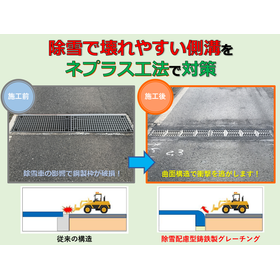The ASW method is the most suitable technique for constructing and renovating vertical retaining walls in urban areas.
The Safety Wall Method (ASW Method) is a bracket-type or self-supporting vertical retaining wall method that maintains stability through the resistance of piles, columns, retaining walls, bracket plates, weight concrete, and other elements. It does not require a base slab like conventional RC retaining walls such as L-shaped walls, resulting in reduced excavation and backfill cross-sections, which enhances economic efficiency and constructability.
Inquire About This Product
basic information
【Features】 ○ Since a base slab is not required, the amount of earthwork such as excavation and backfilling associated with construction is reduced. ○ By using PC panels (factory-made products) for the wall structure, the construction period can be shortened. Additionally, depending on the site conditions, the wall structure can also be made of reinforced concrete through on-site construction. ○ It can serve as both a retaining wall and a support for underground construction. ○ The new structural form allows for the construction of vertical retaining walls in narrow sites. ○ Renovation and reinforcement of retaining walls at risk of collapse can be carried out with minimal impact on existing buildings. ○ As it is an independent retaining wall, setting the average ground level becomes advantageous. ○ In the case of back anchor type, the horizontal forces acting on the retaining wall due to earth pressure are supported by the horizontal resistance of the back anchors and the horizontal resistance of the foundation piles. ● For more details, please contact us.
Price information
-
Delivery Time
Applications/Examples of results
Renovation and reinforcement of existing retaining walls (residential land, grounds, cemeteries, waterways, road expansion, forest roads, mechanical parking pits, etc.)
Company information
The ASW method is a construction technique that minimizes the impact on buildings during the construction of retaining walls associated with land development, as well as during the renovation and reinforcement of existing hazardous retaining walls. Unlike conventional L-shaped retaining walls, this method can be applied in locations where renovations and repairs are not feasible, and it is anticipated as a renovation and repair method by municipalities where hazardous retaining walls remain unrenovated. To promote the dissemination of this method and improve technology, we have established the Safety Wall Method Research Association and are advancing new technology development.









